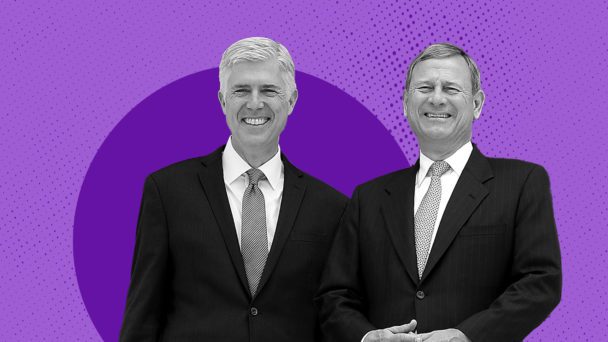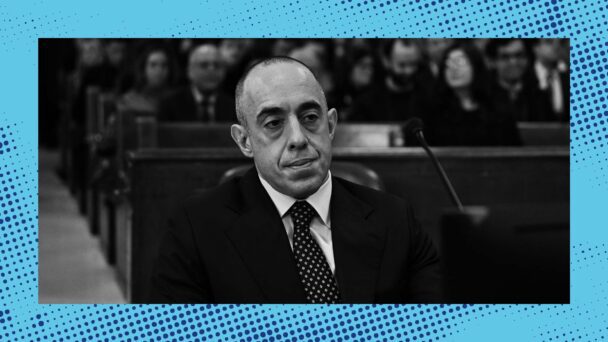A federal district judge in Chicago published a 233-page opinion and order on Thursday, November 20, following an oral ruling from the bench two weeks earlier, that required the Trump administration to stop brutalizing journalists, protesters, and clergy at the Immigration and Customs Enforcement facility in Broadview, Illinois. On Wednesday, November 19, a three-judge panel of the Seventh Circuit Court of Appeals blocked the order.
You did not read that wrong: The appellate panel blocked Judge Sara Ellis’s ruling before reading her explanation as to why she issued it.
In theory, there are rules about this sort of thing. Ellis ordered the Trump administration to stop its uses of force while a lawsuit is challenging those uses of force as illegal. When appeals courts decide whether to lift such preliminary injunctions, judges are supposed to consider which party is likely to succeed on the merits—which, in this case, would mean whether the protesters are correct that the government is breaking the law, or whether the government is correct that it is not. They are also supposed to consider how much risk there is that lifting the order (or keeping it in place) will cause harm that can’t be undone.
Put more simply, the Seventh Circuit was supposed to assess who is likely to win in the end, and who is likely to get hurt in the meanwhile. The appeals court supposedly made these determinations without even seeing Ellis’s opinion in Chicago Headline Club v. Noem.
If the panel, composed of two Trump appointees and one Reagan appointee, had bothered to consider Ellis’s fact-finding and analysis, they would have found a meticulous accounting of the Trump administration’s practices of violating constitutional rights and lying to justify its actions. Ellis noted that ICE personnel repeatedly shot pepper balls at peaceful protesters and praying clergy at close range; tear-gassed expectant mothers, children, and babies; and pointed guns at people exercising their First Amendment rights. The government’s conduct in Broadview, she said, “shocks the conscience.”
Furthermore, Ellis found no evidence to support the administration’s claim that it was responding to violence by protesters. Government agents “cannot simply create their own narrative of what happened, misrepresenting the evidence to justify their actions,” she wrote.
With nothing to indicate that the administration was likely to succeed on the merits, the appeals court is supposed to weigh the impact on the government and the protesters. Perhaps recognizing that they could not credibly deny that people had experienced harm, the Seventh Circuit judges suggested that the harm wasn’t relevant, since there are “open questions” as to whether the protesters, priests, and press who were harmed in the past are likely to be harmed in the same way in the future. And the panel was far more deferential than Ellis to the Trump administration’s arguments: “Any time that the Government is enjoined by a court from effectuating statutes enacted by representatives of its people, it suffers a form of irreparable injury,” said the court.

(Photo by Jacek Boczarski/Anadolu via Getty Images)
The Seventh Circuit didn’t come up with that line itself—it’s something that Justice William Rehnquist said 50 years ago, and that Chief Justice Roberts has reshaped in recent years into a free pass for the government. In 1977, the Supreme Court lifted a preliminary order that blocked California from enforcing a statute about car dealership franchises. Rehnquist reasoned that statutes are presumptively constitutional and should remain in effect until courts conclude otherwise, unless there’s some compelling harm at stake that outweighs the harm to the state of not enforcing a statute.
In 2012, the Court used this logic to lift an order that blocked Maryland from enforcing a statute about collecting DNA samples from people charged with but not convicted of crimes. In his opinion, Chief Justice John Roberts quoted Rehnquist’s line about states being harmed when they can’t enforce their statutes, but didn’t mention the possible harms of enforcement to anyone else. In effect, the state’s inability to implement a statute alone was enough to render an injunction legally suspect.
Jump to 2024, and Rehnquist’s line reappeared in Trump v. CASA, a case that involved not a statute, but an executive order that purported to rescind the Fourteenth Amendment’s guarantee of birthright citizenship. Two months ago, the line popped up again in Noem v. Vazquez Perdomo, in which Justice Brett Kavanaugh argued in a solo concurrence that because the government “suffers a form of irreparable injury” when a court stops it from enforcing a statute, it would be irreparably harmed by an injunction barring racial profiling, too.
Just to clear up any confusion: There is no statute that allows the president to unilaterally revoke birthright citizenship. There is no statute that authorizes racial profiling. And there is no statute that permits the government to use incredible and indiscriminate force against protesters, journalists, and religious practitioners. In all three of these cases, Republican appeals court judges lifted a lower court injunction that supposedly prevented the government from enforcing a law. But all of the injunctions merely commanded the government to follow the Constitution—something it is supposed to do anyway.
The Roberts Court is thus transforming the idea that the government should be able to apply its laws into the idea that the government shouldn’t have to follow its laws. And in lifting Ellis’s order, the Seventh Circuit is following in the Court’s footsteps.





